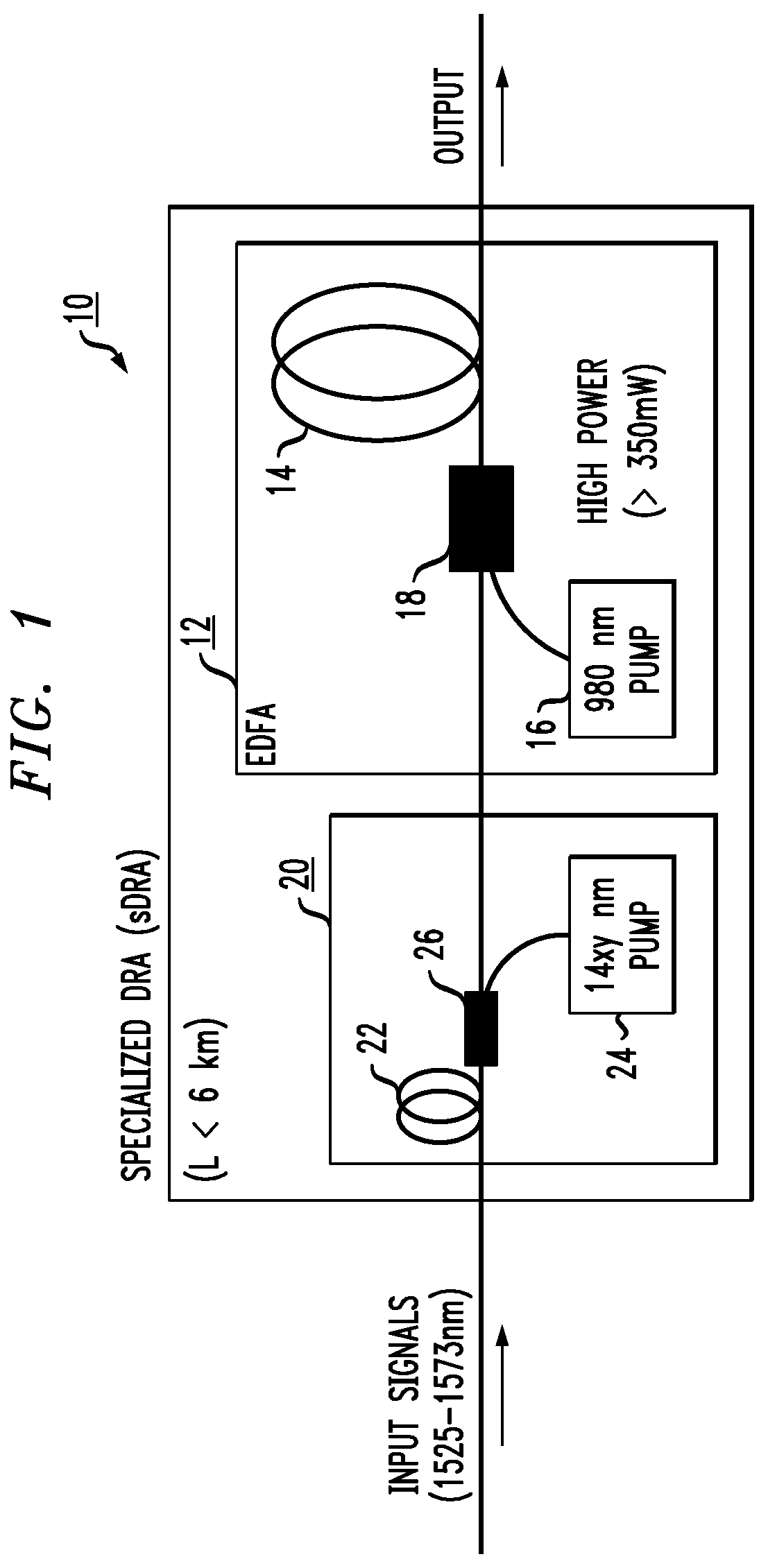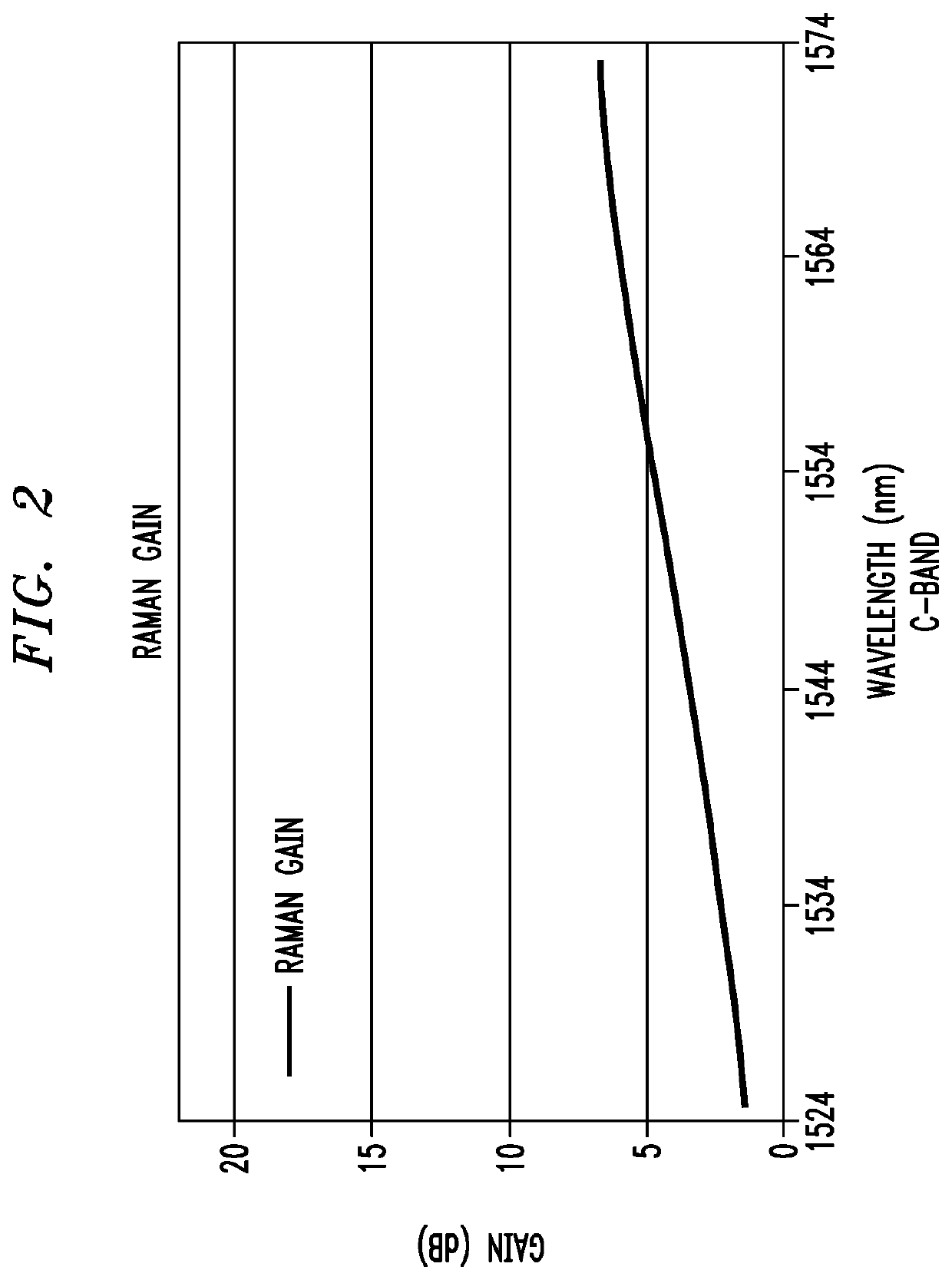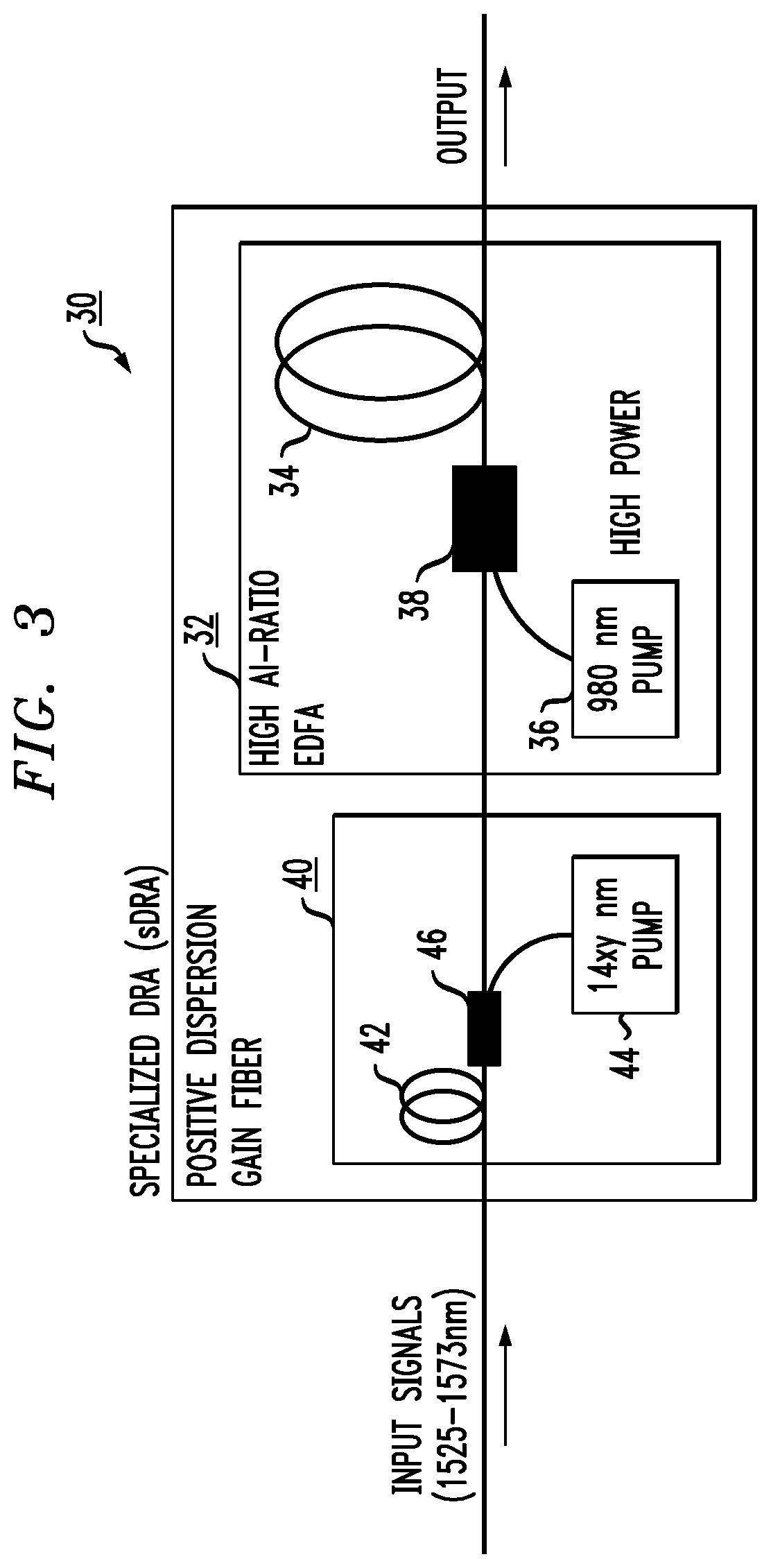Wide gain bandwidth c-band optical fiber amplifier
a fiber amplifier and wide gain bandwidth technology, applied in the direction of active medium shape and construction, laser details, active medium materials, etc., can solve the problems of increasing the gain bandwidth, extending the gain bandwidth necessarily, reducing power conversion efficiency (pce), and increasing the noise figure (nf). , to achieve the effect of wide gain bandwidth, reducing gain ripple, and increasing gain
- Summary
- Abstract
- Description
- Claims
- Application Information
AI Technical Summary
Benefits of technology
Problems solved by technology
Method used
Image
Examples
Embodiment Construction
[0020]Typical prior art EDFAs used to amplify optical signals in the C-band are known to provide acceptable gain only within the limited band between 1528 nm and 1565 nm (i.e., a gain bandwidth of about 37 nm). A goal of the present invention is to extend this gain bandwidth to a value of at least 42 nm, and preferably in the range of 46-48 nm, providing gain over the wavelength of 1525-1573 nm.
[0021]As will be described below, an EDFA operating at a relatively high inversion level (e.g., no less than about 0.69) is used to create a majority of the overall gain with a specialized discrete Raman amplifier (sDRA) having particular Raman gain fiber characteristics (in terms of length, as well as perhaps dispersion and / or effective area) utilized to augment the gain spectrum of the high inversion level EDFA so that the combination has a wide bandwidth and exhibits a gain ripple that may be controlled by a conventional gain flattening filter (GFF). Since the EDFA has a fixed wavelength r...
PUM
| Property | Measurement | Unit |
|---|---|---|
| length | aaaaa | aaaaa |
| length | aaaaa | aaaaa |
| wavelength | aaaaa | aaaaa |
Abstract
Description
Claims
Application Information
 Login to View More
Login to View More - R&D
- Intellectual Property
- Life Sciences
- Materials
- Tech Scout
- Unparalleled Data Quality
- Higher Quality Content
- 60% Fewer Hallucinations
Browse by: Latest US Patents, China's latest patents, Technical Efficacy Thesaurus, Application Domain, Technology Topic, Popular Technical Reports.
© 2025 PatSnap. All rights reserved.Legal|Privacy policy|Modern Slavery Act Transparency Statement|Sitemap|About US| Contact US: help@patsnap.com



